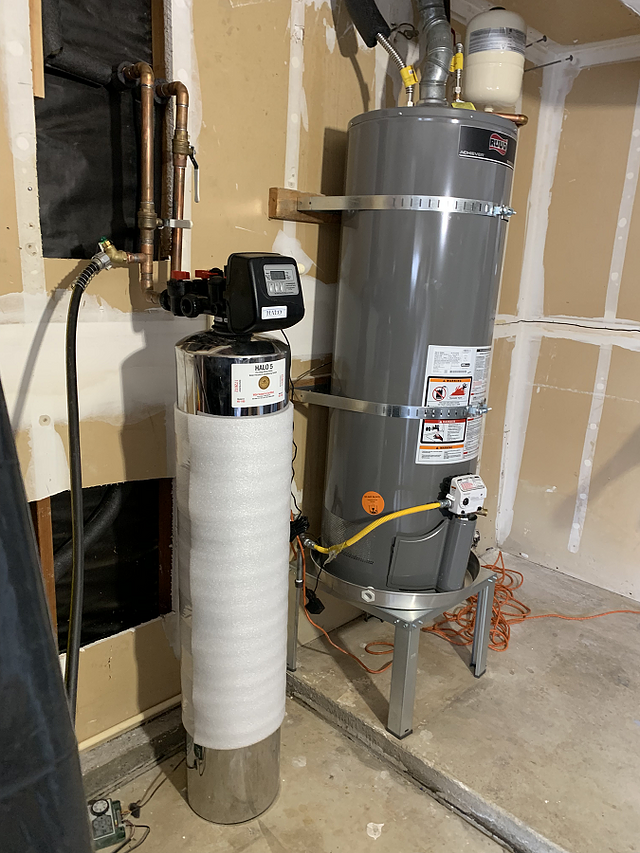Activated carbon’s general contaminant removal capabilities.
HALO water filtration systems are designed to leverage activated carbon’s incredible ability to remove contaminants from our Sacramento water supply.

Contaminants Effectively Removed in homes in the greater Sacramento area - Folsom, Elk Grove, Rancho Cordova and surrounding areas.
Chlorine
(Water additive used to control microbes)
Sodium Hypochlorite
(From natural erosion & used in water treatment)
Commercial Additives
- Cresol Dyes • Xylene
- Ketones Phenol
- Toluene Toluidine
Disinfectants
- Bleach
- Calcium Hypochlorite
- Chlorophenol
PCBs (Environmental pollutants) Pesticides
- Defoliants
- Herbicides
- Insecticides
- Insecticides
- Methyl Bromide
Solvents
- Amyl Acetate
- Butyl Acetate
- Chloroform
- Diesel Fuel
- Glycols
- Methyl Ethyl Ketone
- Nitrobenzene
- Oxalic Acid
- Trichloroethylene
- Benzene
- Butyl Alcohol
- Chlorobenzene
- Gasoline
- Hydrochloric Acid
- Naphtha
- Oil (Dissolved)
- Organic Esters/li>
- Turpentine
TTHM (Total Trihalomethanes)
TTHM (Total Trihalomethanes)
Pharmaceutical By-Products
- Chloral Iodine • Isopropyl Alcohol
- Isopropyl Alcohol
Tannins (Food & wine by-products)
Tar Emulsion (Topical medication by-product) Undesirable Odors
- Chlorinous or bleach odor
- Earthy or grassy odors
- Fishy odor
- Fruity odor
- Musty odor
- Pool, bleach or geranium odor
Undesirable Taste
- Bleach or chlorine taste
- Garlic taste
- Medicinal taste
- Plastic Taste
- Rubber Hose Taste
- Rusty or Metallic taste
Likely Source Of Odor Contamination
Addition of chlorine as a disinfectant Geosmin produced by algae 2t, 4c, 7c-decatrienal produced by algae.
Aldehydes produced by ozonation of water for disinfection 2-Methylisoborneol (MIB) produced by algae
Addition of chlorine and ammonia as a disinfectant (chloramines)
Likely Source Of Taste Contamination
Addition of chlorine as a disinfectant
Methane gas resulting from the decomposition of organic matter Phenols from industrial waste or Chlorophenols
Addition of chlorine as a disinfectant
Addition of chlorine and ammonia as a disinfectant (chloramines) Iron & manganese in the ground
Limited Contaminant Reduction
Fluoride
Hydrogen
Bromide
Precipitated
Iron
Precipitated
Sulfur
Contaminants Reduced
Acetic Acid (Water chlorination by-product) Detergents
Heavy Metals (Chromium, lead, copper, zinc and cadmium) Hydrogen Selenide (Similar to arsenic)
Hydrogen Sulfide (Responsible for “rotten egg” odors) Lead (Erosion of natural deposits, corrosion of household plumbing systems)
Nitric Acid (Strong antioxidant) Soaps
Vinegar
Contaminants Significantly Reduced
Alcohols (Commercial by-products) Antifreeze (Poisonous products)
Chloramine
(Water additive used to control microbes) Commercial Additives
- Chlorophy
- Ethyl Alcohol
- Ethyl Ether
- Mercaptans
- Propionaldehyde
- Propyl Acetate
- Propyl Chloride
- Tartaric Acid
- Citric Acid
- Ethyl Chloride
- Ethylamine
- Organic Acids
- Propionic Acid
- Propyl Alcohol
- Sulfonated Oils
- Xanthophyll
Contaminants Significantly Reduced
- Acetaldehyde
- Acetone
- Methyl Acetate
- Methyl Alcohol
- Ozone
- Methyl Chloride
- Organic Salts
Disinfectants
- Lactic Acid
- Potassium Permanganate
- Radon (Gaseous element)
DISCLAIMER: The use of activated carbon alone in homes in the greater Sacramento area does not necessarily guarantee the removal of the contaminants and pathogens listed above from water. Effective contaminant and pathogen reduction is dependent on the complete Halo home filtration system designs and on the operation and maintenance of the systems.
If you have any questions, please feel free to contact us today.

